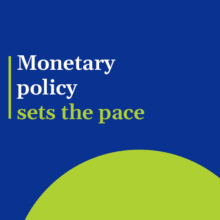Global economic situation
In mid February, just before the Russian invasion of Ukraine, the evolution of the main macroeconomic variables allowed us to speak of recovery. The remission of the pandemic, vaccination efforts, expansionary economic policies and favorable financial conditions justified the IMF’s January forecast of overall GDP growth of 4.4 % in 2022 and 3.8 % in 2023 . However, it pointed to the risk of inflationary pressures fueled by rising energy and other commodity prices in the face of recovering demand coupled with supply constraints.
The invasion represents a new blow to the global economy and generates a qualitative change in the geopolitical situation, increasing uncertainty. Although the weight of Russia and Ukraine in the world’s GDP, trade and financial markets is small*, both account for a significant percentage of global exportsof oil, gas, wheat, corn and metals such as palladium and nickel. According to the OECD, the rise in commodity prices and movements in the financial markets could reduce global GDP growth by over 1 percentage point (pp) in the first year and push up global consumer price inflation by around 2.5 pp.



